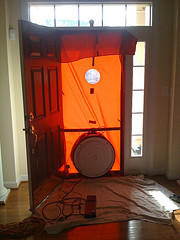- 4 reads

Homes are Americans' largest investment, and because homes and offices account for over 40 percent of the national energy use, each step to make them “smarter” goes a long way in reducing financial burdens as well as the amount of carbon dioxide generated to provide power to each home.
Many homes suffer from inefficiencies, from the obvious to the obscure. Any homeowner stands to reap large benefits from an analysis of a home’s utilities, power zappers and air flow. Thankfully, there are numerous options for homeowners besides replacing old windows, many of which are cost efficient but not immediately apparent to the average dweller.
Various levels of action are possible in optimizing your home. Money can be saved simply by “tuning” up your home or adjusting behavior. Installing a high-performance faucet or showerhead can dramatically reduce water usage. Installing a programmable thermostat, and using it, guarantees smaller heating bills. Deeper savings can be garnered with home improvements using cost-effective eco-friendly products, such as high-efficiency heaters, while serious transformations like solar panels and a geothermal heating system can turn your home into a high-performance residence, yielding unfathomable savings.
All levels of commitment save money, reduce utility consumption and dependence, and benefit human health and the environment. But how much investment is worthwhile? When deciding on steps to conserve energy, homeowners often ask "What's the payback on 'green' home remodeling?"
A table of return-on-investment (ROI) rankings for more than 50 home improvement projects provides answers to match specific needs and budgets. Such a table has been formulated based on research from government reports, product specifications, university studies and homeowner results. The table demonstrates that several hundred dollars well spent can go a long way to save thousands over just a few years. Calculation summaries include initial extra cost, payback in months or years, annualized savings, and the ROI ranging from programmable thermostats to photovoltaic solar panels. The table can be found at www.greenandsave.com or http://www.greenandsave.com/master_roi_table.html.
The prototype eco-friendly house looks, feels, and functions like a traditional American home rather than a technology experiment. Identifying wasteful or inefficient elements in a home can be easy or mysterious. For example, the proper placement of a fan in your home with respect to doorways and windows makes a surprising difference in cooling indoor air. Meanwhile, the amount of insulation and vents installed in the attic or top floor will reveal how much warm air is held in a home in the winter or allowed to escape in the summer.
A home efficiency checkup by a certified GREENandSAVE Home Efficiency Consultant includes a combination of sit down review and a one to two hour walk-through session using a comprehensive check list to identify problem areas that waste utilities, make recommendations, answer questions and provide a detailed report based on the findings during the consultation.

